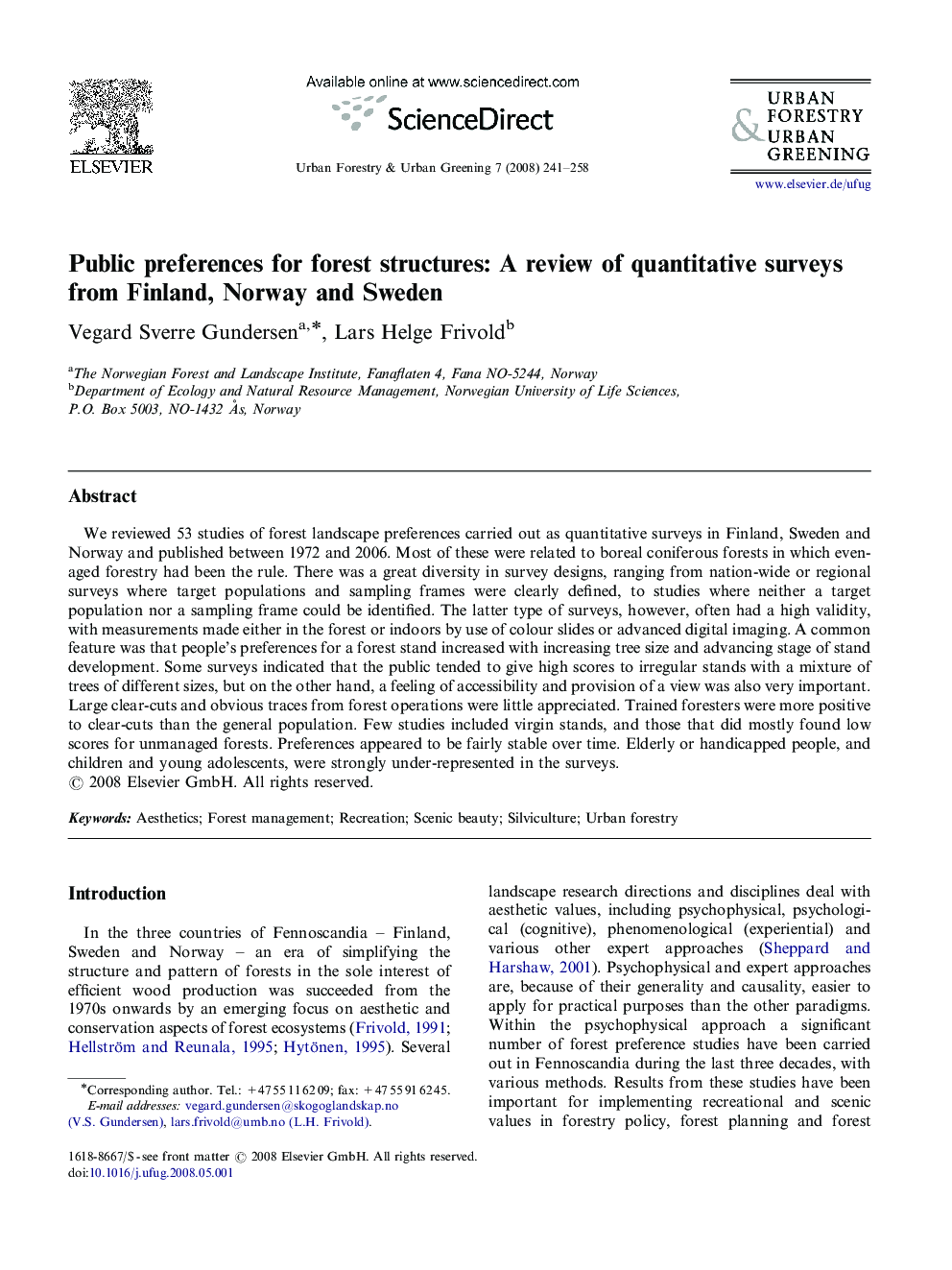| کد مقاله | کد نشریه | سال انتشار | مقاله انگلیسی | نسخه تمام متن |
|---|---|---|---|---|
| 94396 | 160284 | 2008 | 18 صفحه PDF | دانلود رایگان |

We reviewed 53 studies of forest landscape preferences carried out as quantitative surveys in Finland, Sweden and Norway and published between 1972 and 2006. Most of these were related to boreal coniferous forests in which even-aged forestry had been the rule. There was a great diversity in survey designs, ranging from nation-wide or regional surveys where target populations and sampling frames were clearly defined, to studies where neither a target population nor a sampling frame could be identified. The latter type of surveys, however, often had a high validity, with measurements made either in the forest or indoors by use of colour slides or advanced digital imaging. A common feature was that people's preferences for a forest stand increased with increasing tree size and advancing stage of stand development. Some surveys indicated that the public tended to give high scores to irregular stands with a mixture of trees of different sizes, but on the other hand, a feeling of accessibility and provision of a view was also very important. Large clear-cuts and obvious traces from forest operations were little appreciated. Trained foresters were more positive to clear-cuts than the general population. Few studies included virgin stands, and those that did mostly found low scores for unmanaged forests. Preferences appeared to be fairly stable over time. Elderly or handicapped people, and children and young adolescents, were strongly under-represented in the surveys.
Journal: Urban Forestry & Urban Greening - Volume 7, Issue 4, 2008, Pages 241–258